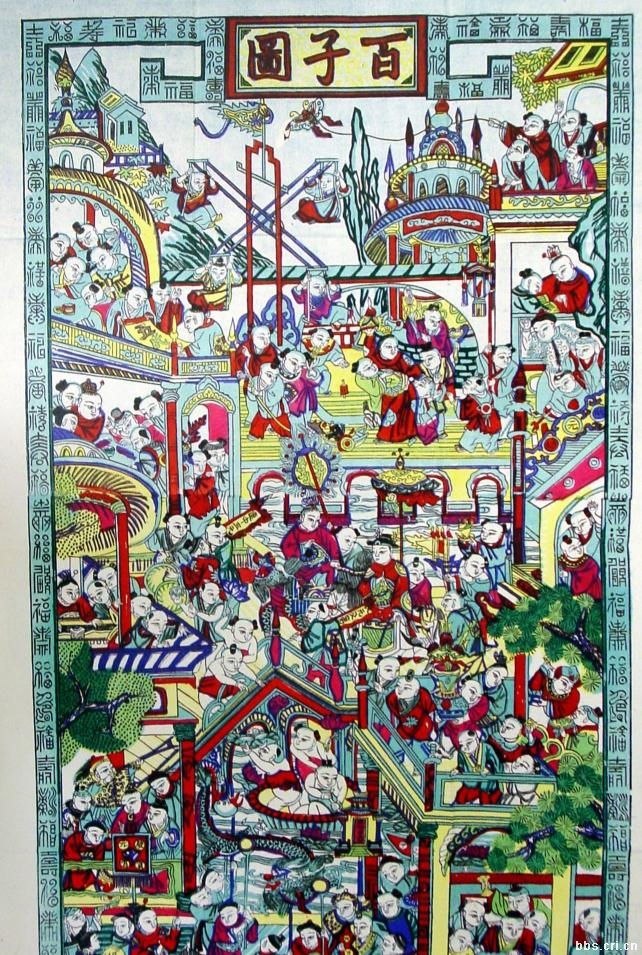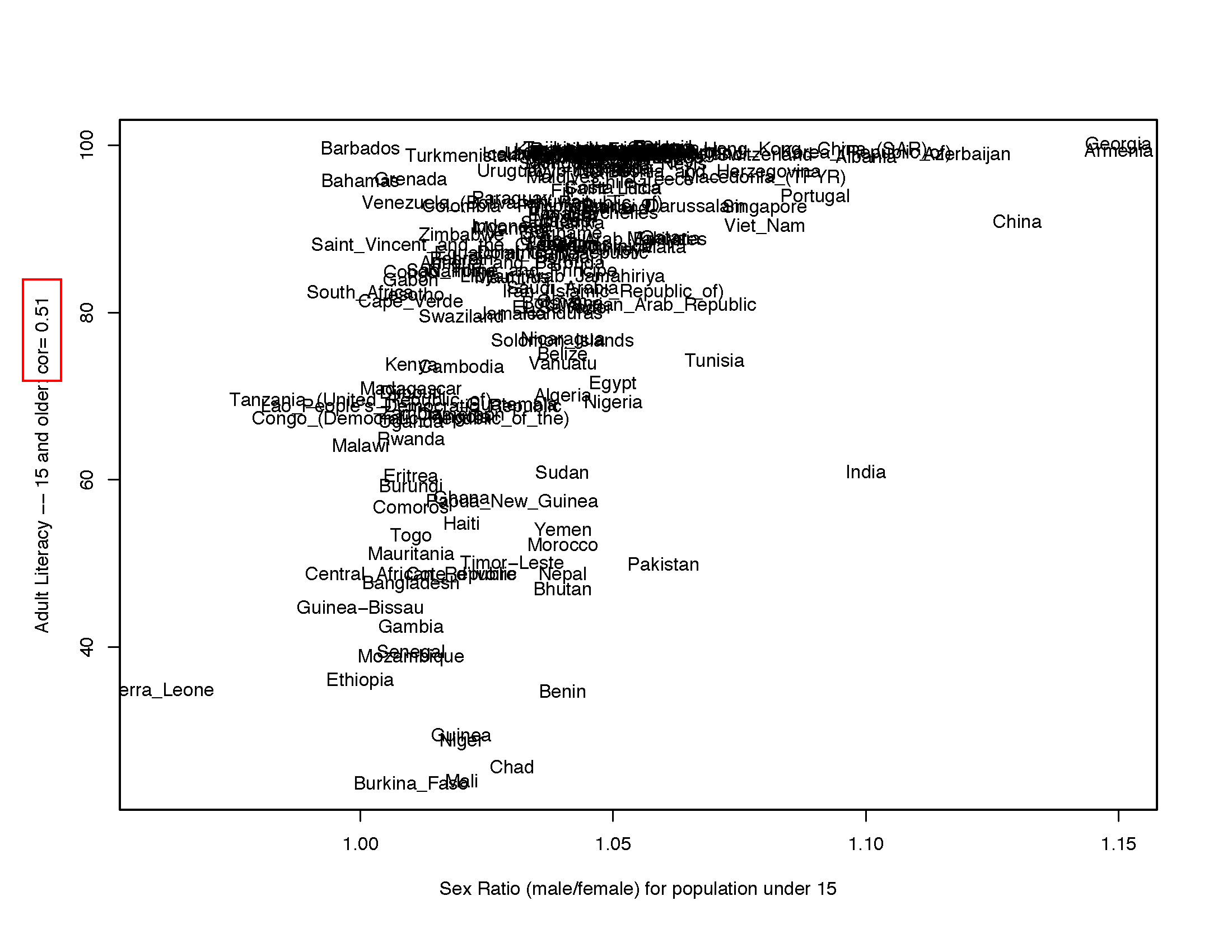A Sunday Morning Shocker
Literacy and the Sex Ratio
Richard Sproat
March, 2010

A 百子圖 (bai zi tu) or "Picture of a
Hundred Sons", a traditional Chinese motif.

A 百子圖 (bai zi tu) or "Picture of a
Hundred Sons", a traditional Chinese motif.
I was curious to see how this trend fared worldwide. I have data on literacy and other socioeconomic factors that I collected from the United Nations Human Development Programme's set of economic indicators, for my forthcoming Oxford University Press book Language, Technology, and Society. Data on sex ratios are available from the CIA World Factbook.
The literacy data is for adults, defined as those 15 and over. A variety of sex-ratio data is available from the CIA page: I chose the ratios for the population 15 and under, as reflecting sex biases integrated over the past 15 years. Per The Economist, this underestimates the ratio for recent in several parts of the world, where things are only getting worse.
The data, for 176 countries, is plotted below. On the horizontal axis is the sex-ratio for the population under 15, with the higher numbers meaning more males per females. Bear in mind that a ratio of between 1.03 to 1.06 male/female is considered biologically normal. On the vertical axis is the literacy rate for those 15 and over. Note the positive correlation of 0.51: a higher literacy rate correlates with a higher male/female ratio.

For the raw data, sorted by decreasing male/female ratio, see the table.
To put this in perspective, the correlation for the percentage of the population employed in agriculture and literacy is -0.62: this is expected since in many parts of the world agriculture is highly labor-intensive, and children are often employed in agriculture at the expense of schooling. So this strong negative correlation is unsurprising. The almost as strong positive correlation in the new data is both unexpected, and shocking. Note also that none of the countries with a male/female ratio of above 1.1 have a literacy rate that is less than 60%. Indeed, only India has a literacy rate that low; all the other countries with high male/female ratios have literacy rates above 90%. Indeed, as The Economist points out: "In India, some of the most prosperous states—Maharashtra, Punjab, Gujarat—have the worst sex ratios." So one suspects that if one were to plot these data not by country, but with finer-grained information at the state level (unfortunately I do not have those data) then the correlation would be even stronger.
Obviously literacy (and education) does not cause this trend. What it does suggest though is that if the social attitudes are in place to favor boys over girls, and if the economic means are there, then a better educated population is actually more at risk. This is surprising: one would have thought that a higher literacy rate (and thus better education) would correlate with a more enlightened attitude towards females. Sadly, this seems not to be the case.
© 2010 Richard Sproat